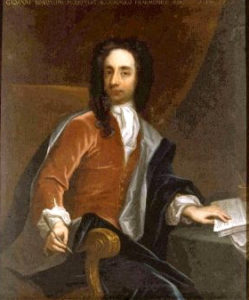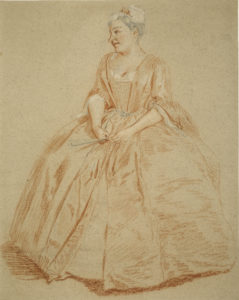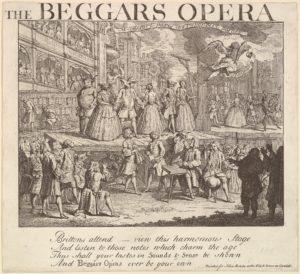by Anne Schuster Hunter

George Frideric Handel
Music held London enthralled at the turn of the 18th century. In that big, chatty city—in 1700 the largest in Europe—people followed music stars with pop-fan avidity. The composers, the players, the singers, and all their hijinks had everyone’s tongues wagging—and tickets sailing out the door.
In Handel and His Frenemies, Tempesta di Mare salutes one of those English moments when tunes ruled and the talent dueled. With instrumental music by Handel and colleagues, it presents the fearsome musical talent pool that gathered in London in the 1710’s and ‘20’s and became the biggest game in town, if not the continent.
Everybody knew about the time superstar soprano Francesca Cuzzoni refused to sing one of George Frideric Handel’s new arias and Handel said he’d throw her out the window.

Giovanni Bononcini
Italian opera fueled London’s music boom in the 1710’s and it was a gossipers’ dream. High-strung, flamboyant, expensive, big-name opera stars recruited from Italy turned London’s cultural heat up to the boiling point. Emotions and stakes were running high—and given London’s famous bookies, that’s probably literal.
Everybody knew about the time superstar soprano Francesca Cuzzoni refused to sing one of George Frideric Handel’s new arias and Handel said he’d throw her out the window. Everybody knew when opera companies poached each other’s talent. And when composers accused each other of plagiarism. And when Cuzzoni, again, picked a fight onstage with mezzo-soprano Faustina Bordoni during a performance of Giovanni Bononcini’s Astianatte, throwing punches and pulling hair while the audience cheered. Princess Caroline attended that show. She was not amused.
Everybody knew and everybody picked sides. Premieres became popularity contests between composer favorites like Handel and Bononcini. A pamphlet from 1727 called London music as bigger than religion or politics:

Francesca Cuzzoni
What doesn’t kill you makes you stronger and amidst all the agita, London music flourished, even when Italian opera faded in the late 1720’s. Handel reinvented himself in English with Messiah. John Gay’s English-language Beggar’s Opera of 1728, with overture and arrangements by Johann Pepusch, was originally conceived as a parody of Italian opera—it even includes two feuding back-alley divas reminiscent of Cuzzoni and Faustina: Polly Peachum and Lucy Lockit.
But the Beggar’s Opera outlived its target to become one of the most popular stage properties in history, a smash hit at premiere, continually revived from the 18th century through the 21st (it was performed for the first time in Philadelphia in 1769) and taking on a whole new life in the Bertolt Brecht/Elisabeth Hauptmann/Kurt Weill homage, The Threepenny Opera.
 Meanwhile, nationals like Greene and Arne launched new productions and venues for English music. Arne, by the way, has legs even more than Pepusch and the Beggar’s Opera. He wrote “Rule Britannia!”
Meanwhile, nationals like Greene and Arne launched new productions and venues for English music. Arne, by the way, has legs even more than Pepusch and the Beggar’s Opera. He wrote “Rule Britannia!”
Handel’s fame has long overshadowed Bononcini, Pepusch, Greene and Arne, but Tempesta’s Handel and his Frenemies offers them at top form so that we can suss out the competition. Handel himself is represented by his Opus 6 Concerto Grosso No 3 and a suite from one of his Italian operas, Il Pastor Fido, that has a finale that’ll keep your toes tapping all the way home.
You can bet on it.
*The Devil to pay at St. James’s: Or A full and true Account of a most horrid and bloody Battle between Madam Faustina and Madam Cuzzoni, printed for A. Moore, 1727. British Museum.
Images:
Georg Friedrich Handel, The Chandos Portrait (anonymous, ca. 1720). commons.wikipedia.org.
Giovanni Bononcini (unknown), Museo Civico Bibliografia Musicale, Bologna. commons.wikipedia.org
Francesca Cuzzoni (Philippe Mercier, 1689-1760). British Museum. commons.wikipedia.org.
The Beggar’s Opera, 1728, (unknown). metmuseum.org.
